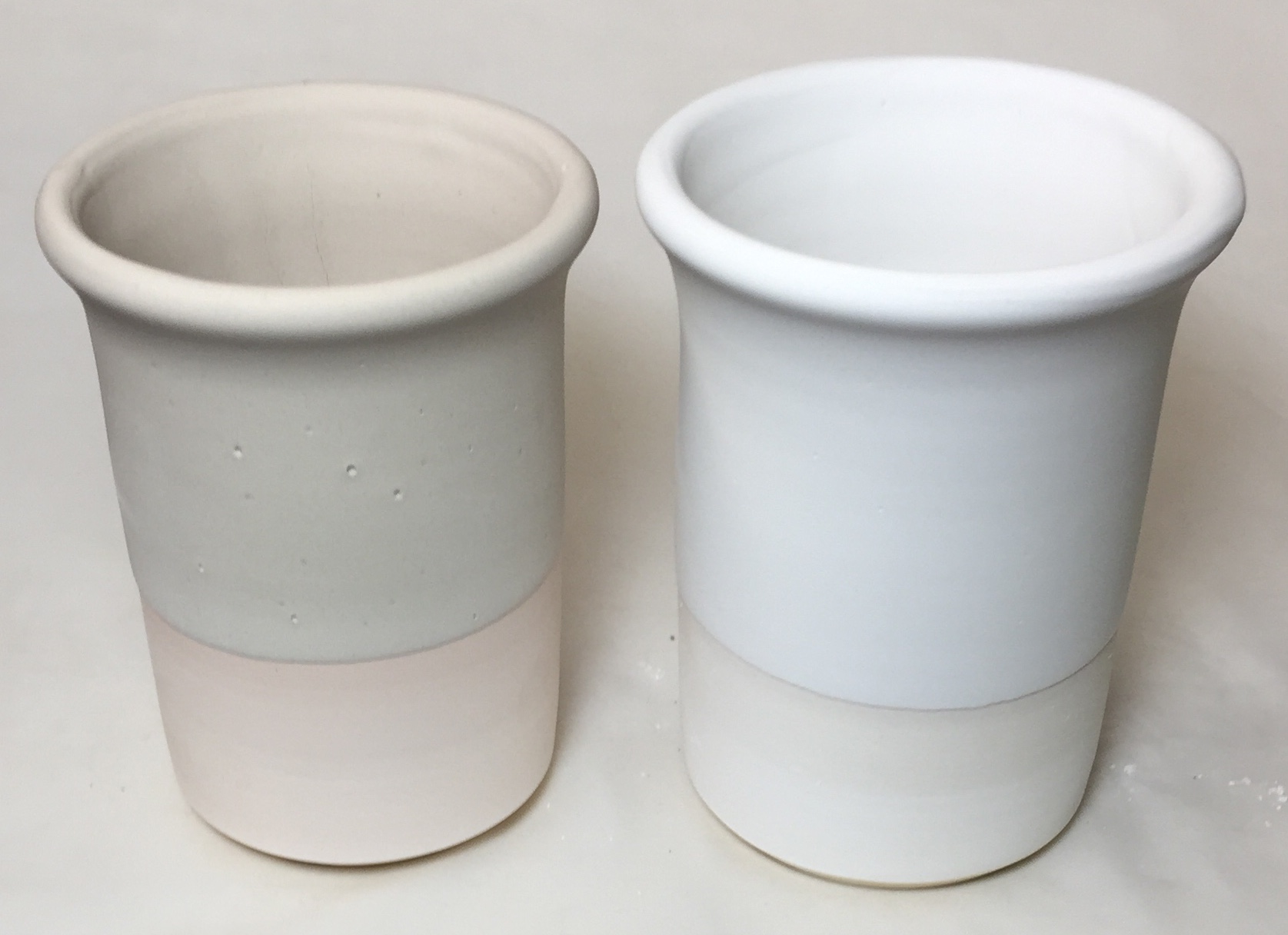Pure feldspar applied as a glaze: Possible because of the magic of thixotropy.
These are pure Custer insight-live.com/material/310">feldspar and Nepheline Syenite. The coverage is perfectly even on both. No drips. Yet no clay is present. The secret? Epsom salts. I slurried the two powders in water until the flow was like heavy cream. I added more water to thin and then started adding the Epsom salts (powdered). After only a pinch or two, they both gelled. Then I added more water and more Epsom salts until they thickened again and gelled even better. The result is a thixotropic slurry. They both applied beautifully to these porcelains. The gelled consistency prevented them from settling in seconds to a hard layer on the bucket bottom. Could you do this with pure silica? Yes! The lesson: If these will suspend by gelling with Epsom salts, then any glaze will. You never need to tolerate settling or uneven coverage for single-layer dip-glazing again!
Pages that reference this post in the Digitalfire Reference Library:
Epsom Salts, Suspending pure feldspar and applying it as a glaze, Craze city: Feldspar and Nepheline Syenite on cone 10R porcelain bodies, See the magic of thixotropy as I mix a 20kg batch of G2926B glaze, The engobe on this stainless steel spoon has not cracked in drying or firing. How?, Thixotropy, Watch Thixotropy Happen With a 20kg Batch of Dipping Glaze, Powdering, Cracking and Settling Glazes

This post is one of thousands found in the Digitalfire Reference Database. Most are part of a timeline maintained by Tony Hansen. You can search that timeline on the home page of digitalfire.com.
